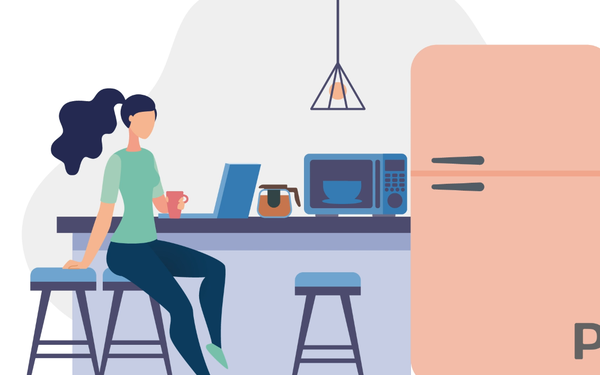In the first part of our ‘Germs in the Workplace’ series, we looked at the multitude of bacteria lurking across your commute and on your desk.
Next up, we’re going to focus on the communal office spaces you share with your colleagues, and the setting to many hygiene horror stories – the workplace kitchen.
NICE TO MEET YOU
With many different people in one place, it’s inevitable that your workspace’s meeting rooms and communal spaces can harbour a multitude of bacteria.
MEETING ROOMS
According to research from Aberystwyth University a handshake can pass 10 times more bacteria on than a fist bump. Washing and drying your hands properly can also massively reduce this risk. It’s also worth remembering that germs can live on hard surfaces for up to 48 hours, meaning door handles and board tables should be regularly sanitised with disinfectant.
SHARED EQUIPMENT
On average, adults touch their faces around 15.7 times per hour. Whatever bacteria they pick up from their skin is then transferred to the surfaces and items they go on to touch. This means whiteboards, pens, printers, the biscuit tin – all shared equipment – can become a hothouse for distributing germs. Again, antibacterial wipes can help halt the spread of germs and bacteria, so should be used regularly.
SINKS
Kitchen sinks can carry more bacteria than a rubbish bin, and a damp sponge can be 200,000 times dirtier than a toilet. Sanitise sponges by putting them in the microwave (they must be wet to avoid them catching fire) for one minute and clean the sink daily with hot soapy water and disinfectant wipes.
YOUR MUG
Treat your mug like your toothbrush and don’t let anyone share it, ever. At the end of the day, give yours a good clean with hot soapy water – a rinse alone won’t suffice as water isn’t sterile and so bacteria will begin to build up.
FRIDGES
With out-of-date food lurking at the back, along with a potential mix of both raw and cooked food not stored correctly, office fridges can be hazardous places. A thermometer is a great investment to ensure the temperature is cold and safe (and won’t harbour any bacteria). Similarly, keep raw foods at the bottom of the fridge, away from ready-to-eat food and protect your lunch by using a plastic container with a lid.
MICROWAVES
A study from the University of Arizona found that a microwave door handle is one of the dirtiest surfaces in your office. As well as skin contact upon opening and closing it, microwaves are rife with leftover bits of food, so extra caution should be taken when reheating your lunch. Be sure to cover the container your food is in and once finished, clean the microwave with disinfectant.
AND ONE LAST THING
We couldn’t let this article go by without giving an honorable mention to the office in your pocket; your mobile phone.
The rumours are true, your phone does indeed hold more bacteria than a toilet seat. 10 times more in fact. And, according to Researchers at the London School of Hygiene and Tropical Medicine, one in every six smartphones has traces of fecal matter on it.
Want to give it a wipe down? We don’t blame you. One of the quickest and easiest ways to clean your phone is by using a 70% alcohol wipe all over its surface, making sure you avoid openings like the headphone port and speaker. This method of cleaning is advised by both Apple and Google, but be sure to go gently to avoid damaging it.






